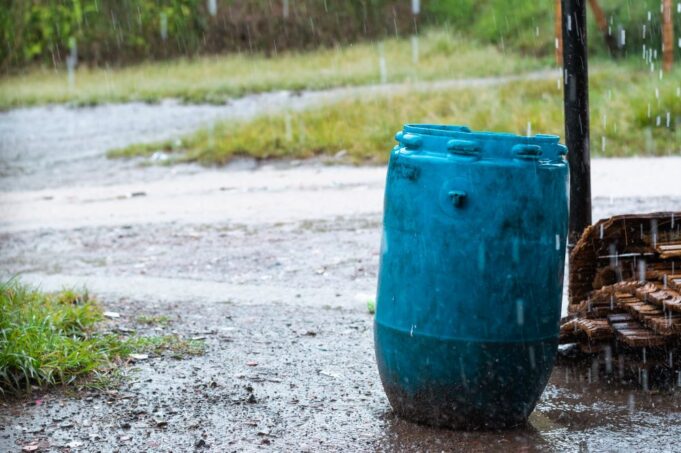Hospitals are among the most water-intensive commercial facilities, with an average daily consumption of 570 gallons per bed. Given the increasing pressures of water scarcity and rising utility costs, healthcare utilities must implement effective water conservation strategies. Systems for water reuse, efficient plumbing fixtures, and proactive leak monitoring can significantly reduce water waste while maintaining operational efficiency. However, these efforts must be carefully balanced with infection prevention requirements to ensure patient safety.
Implementing water reuse systems
Water reuse systems offer hospitals a sustainable means to reduce potable water consumption. Strategies such as rainwater harvesting and greywater recycling can provide non-potable water for applications like irrigation, cooling towers, and toilet flushing. Some facilities have successfully implemented rainwater collection systems to supplement their water supply, significantly cutting their reliance on municipal sources.
Hospitals considering water reuse must ensure proper treatment and monitoring of reclaimed water to prevent contamination. Adhering to regulatory guidelines and maintaining treatment systems at optimal performance is essential to protect both patients and staff from waterborne pathogens.
Upgrading to efficient plumbing fixtures
Modernizing plumbing fixtures is a straightforward yet impactful strategy for water conservation. Low-flow faucets and dual-flush toilets can reduce water consumption without compromising functionality. The EPA’s WaterSense program has established efficiency standards that can help healthcare facilities identify high-performing fixtures that use at least 20% less water than conventional models.
Sensor-activated faucets and touch-free fixtures further enhance water efficiency by reducing unnecessary water flow. A hospital in California reported a 30% decrease in water use after retrofitting its plumbing infrastructure with WaterSense-certified devices.
Establishing leak detection and monitoring systems
Leaks are a significant source of water waste in hospitals, often going undetected for extended periods. A single leaking faucet can waste over 3,000 gallons of water per year. Implementing an automated leak detection system enables facilities to identify and address leaks promptly, preventing excessive waste and reducing water bills.
Advanced metering systems can provide real-time data on water usage patterns, helping facility managers detect anomalies that may indicate leaks or inefficiencies. Regular inspections and maintenance of plumbing infrastructure further contribute to conservation efforts by ensuring that systems remain in optimal working condition.
Balancing water conservation with infection prevention
Water conservation measures must not compromise infection control protocols. Healthcare facilities must ensure that water-saving initiatives do not inadvertently create environments conducive to microbial growth. For instance, reducing water flow rates excessively can lead to stagnation, increasing the risk of Legionella proliferation.
A comprehensive water management plan is essential for balancing conservation with safety. This includes maintaining appropriate water temperatures, regularly flushing seldom-used outlets, and monitoring disinfectant residuals to prevent bacterial growth. Additionally, hospitals should conduct routine water quality testing to ensure compliance with safety standards.
Engaging staff and patients in conservation efforts
Raising awareness among hospital staff and patients is a critical component of a successful water conservation program. Simple behavioral changes, such as promptly reporting leaks and using water-saving practices, can lead to significant reductions in overall consumption.
Facility managers should implement training programs to educate staff on the importance of water conservation and provide guidelines on best practices. Signage in restrooms and patient areas can also encourage mindful water usage among visitors.
Actionable steps for water conservation
- Conduct water audits – Regularly assess water usage patterns to identify inefficiencies and opportunities for savings.
- Upgrade plumbing fixtures – Install low-flow faucets, toilets, and sensor-activated fixtures to reduce unnecessary water consumption.
- Implement water reuse systems – Harvest rainwater and recycle greywater for non-potable applications.
- Monitor for leaks – Use automated leak detection systems and schedule routine inspections to prevent water waste.
- Optimize cooling tower efficiency – Improve water management practices in cooling towers to minimize losses.
- Educate staff and patients – Promote water conservation awareness through training programs and signage.
- Maintain appropriate water temperatures – Prevent microbial growth while ensuring efficient water use.
- Establish a water management team – Assign responsibility to a dedicated group for ongoing monitoring and improvements.
In order to conserve water, hospitals must adopt a multifaceted approach. While these efforts yield financial and environmental benefits, they must be carefully integrated with infection prevention strategies to ensure patient safety.
Sources
Facilities Management — Water Conservation
Tap into these four strategies to improve hospital water quality
Tapping into water conservation strategies






